Faculty of Economics University of Zagreb Celebrates 100 Years
ZAGREB December 5, 2020 – With over 9000 students currently enrolled, the Faculty of Economics University of Zagreb is the largest faculty in Croatia. In 2020, this internationally renowned institution celebrates its 100th birthday, so TCN decided to take a closer look.
Every other student you meet in Croatia seems to study economy. It makes you wonder where they all go to after their studies are complete. Are there really so many positions for economists in Croatia?
In 2020, the Faculty of Economics University of Zagreb celebrates its 100th birthday. The long list of its famous former students gives a clue to where all the Croatian economists go – the tourism sector, diplomacy and international relations, business, politics and government.
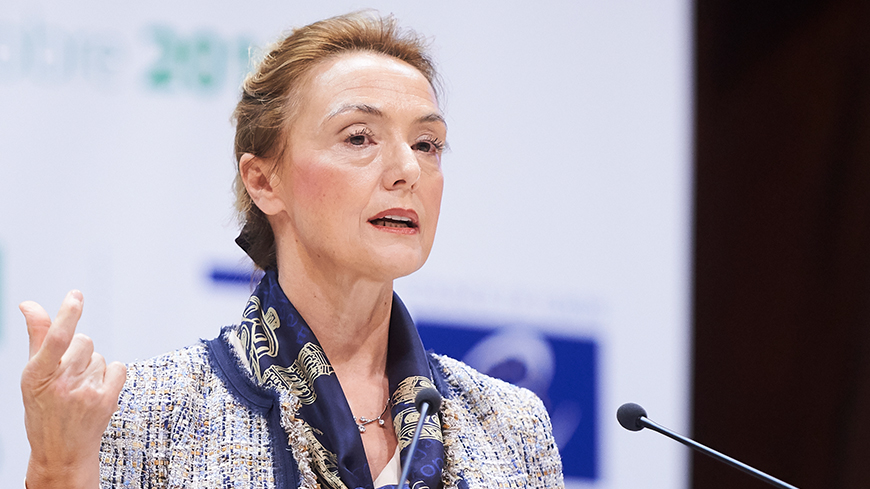 Marija Pejčinović Burić, a graduate of the Faculty of Economics of the University of Zagreb and the current Secretary General of the Council of Europe. After graduating, like Savka Dabčević-Kučar, she became o doctor of economics and before taking her current position served as Croatia's Deputy Prime Minister and Minister of Foreign and European Affairs © Council of Europe
Marija Pejčinović Burić, a graduate of the Faculty of Economics of the University of Zagreb and the current Secretary General of the Council of Europe. After graduating, like Savka Dabčević-Kučar, she became o doctor of economics and before taking her current position served as Croatia's Deputy Prime Minister and Minister of Foreign and European Affairs © Council of Europe
Graduates of the Faculty of Economics University of Zagreb have served as mayors of Zagreb and Split, Deputy Prime Minister of Croatia, Minister of Finance, Minister of the Economy, Secretary-General of the Council of Europe, Governers of the Croatian National Bank, Vice-President of the UN World Food Council, President of the Croatian Football Association, Minister of Environmental and Nature Protection, special advisors to the President of Croatia and countless university professors, including several former rectors of the University of Zagreb. Within its graduate professors, it has produced no less than 19 full members of the prestigious Croatian Academy of Sciences and Arts, more than any other single institution in the country.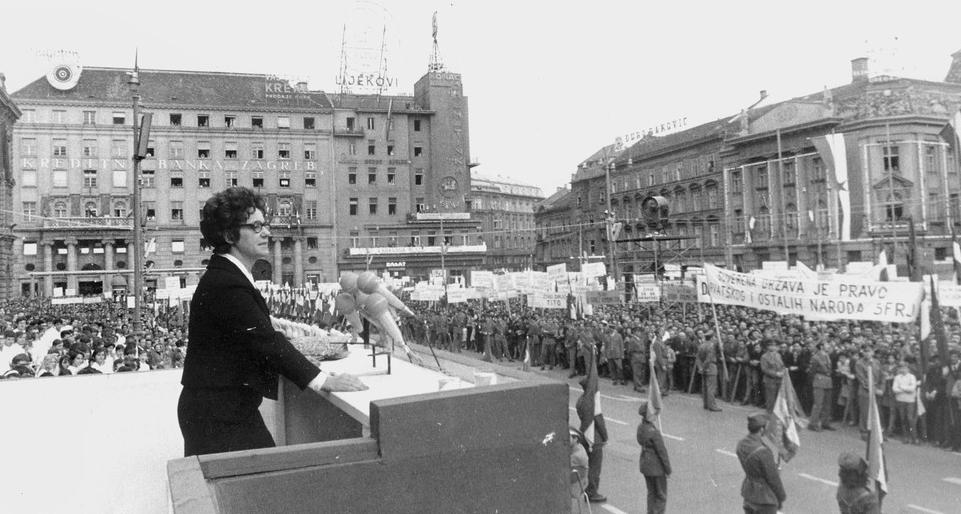 Savka Dabčević-Kučar, a graduate of the Faculty of Economics of the University of Zagreb. Born on Korčula, she became an anti-fascist in World War II, joining the partisans after her brother was beaten by fascists. After graduating, she continued to study at the faculty and became one of the first doctors of economics in Croatia, raising eyebrows by choosing to write her doctorate dissertation about a non-Marxist economic theorist (Englishman John Maynard Keynes). She became a professor at the faculty in the 1950s and despite her great advances in political life, remained a committed teacher at the faculty until 1971. In 1967, she was elected President of the Socialist Republic of Croatia. In 1969, she moved to an even more important position - that of president of the Central Committee of the League of Communists of Croatia. She was the first woman in Europe to be appointed head of government of a political entity and the first female in Croatia to hold an office equivalent to a head of government. In this picture, she addressed supporters on Ban Jelacic Square Zagreb during the movement called the Croatian Spring, which called for greater autonomy for Croatia. At the address, thousands cheered her as “Savka, queen of the Croats”. For her pivotal role in the movement, she was removed from her positions and public life and retired. She returned to politics in 1990 upon the collapse of communism in Europe and during the Croatian war of independence was one of the few politicians who visited the front lines of battle in Slavonia, Petrinja, Pokupski and the Dalmatian hinterland
Savka Dabčević-Kučar, a graduate of the Faculty of Economics of the University of Zagreb. Born on Korčula, she became an anti-fascist in World War II, joining the partisans after her brother was beaten by fascists. After graduating, she continued to study at the faculty and became one of the first doctors of economics in Croatia, raising eyebrows by choosing to write her doctorate dissertation about a non-Marxist economic theorist (Englishman John Maynard Keynes). She became a professor at the faculty in the 1950s and despite her great advances in political life, remained a committed teacher at the faculty until 1971. In 1967, she was elected President of the Socialist Republic of Croatia. In 1969, she moved to an even more important position - that of president of the Central Committee of the League of Communists of Croatia. She was the first woman in Europe to be appointed head of government of a political entity and the first female in Croatia to hold an office equivalent to a head of government. In this picture, she addressed supporters on Ban Jelacic Square Zagreb during the movement called the Croatian Spring, which called for greater autonomy for Croatia. At the address, thousands cheered her as “Savka, queen of the Croats”. For her pivotal role in the movement, she was removed from her positions and public life and retired. She returned to politics in 1990 upon the collapse of communism in Europe and during the Croatian war of independence was one of the few politicians who visited the front lines of battle in Slavonia, Petrinja, Pokupski and the Dalmatian hinterland
The Faculty of Economics University of Zagreb is the largest faculty in the country. Over its 100 year history, it has established itself as an internationally respected institution. Today, it has around 9000 persons enrolled, caters for international students with some courses in English and has produced over 86, 000 graduates, including 856 doctors of science. In its infancy, students of the College of Trade and Transport were taught at the Technical College, which is today the Museum of Arts and Crafts in Zagreb © National and University Library in Zagreb
In its infancy, students of the College of Trade and Transport were taught at the Technical College, which is today the Museum of Arts and Crafts in Zagreb © National and University Library in Zagreb
The history of the Faculty of Economics University of Zagreb starts with the opening in 1920 of its forerunner, the Zagreb College of Trade and Transport. Its purpose was to educate in the areas of banking, domestic and international trade, transport, consular services, insurance and the education of teachers. Its courses lasted three years and it proved so popular that in the academic year 1923/24, some 1,125 students were enrolled.
The institution held college status until 1925 when Stjepan Radić became the Minister of Education. It must have been unusual for Radić to find himself as part of the government of the Kingdom of Serbs, Croats and Slovenes, the state which preceded the Kingdom of Yugoslavia. Today, Radić is best remembered as a politician outspoken in his advocacy of autonomy for Croatia. Before his appointment to the government, he had always done so in opposition. Indeed, he had been imprisoned several times for his views, which were proclaimed loudly in his writings or in person (he was a gifted public speaker). As recently as March 1925 he had been in prison but, when the political party of which he was a member officially recognised the monarchy and the state constitution, he was freed. In a remarkable turnaround, before the year's end, he was a minister in the government.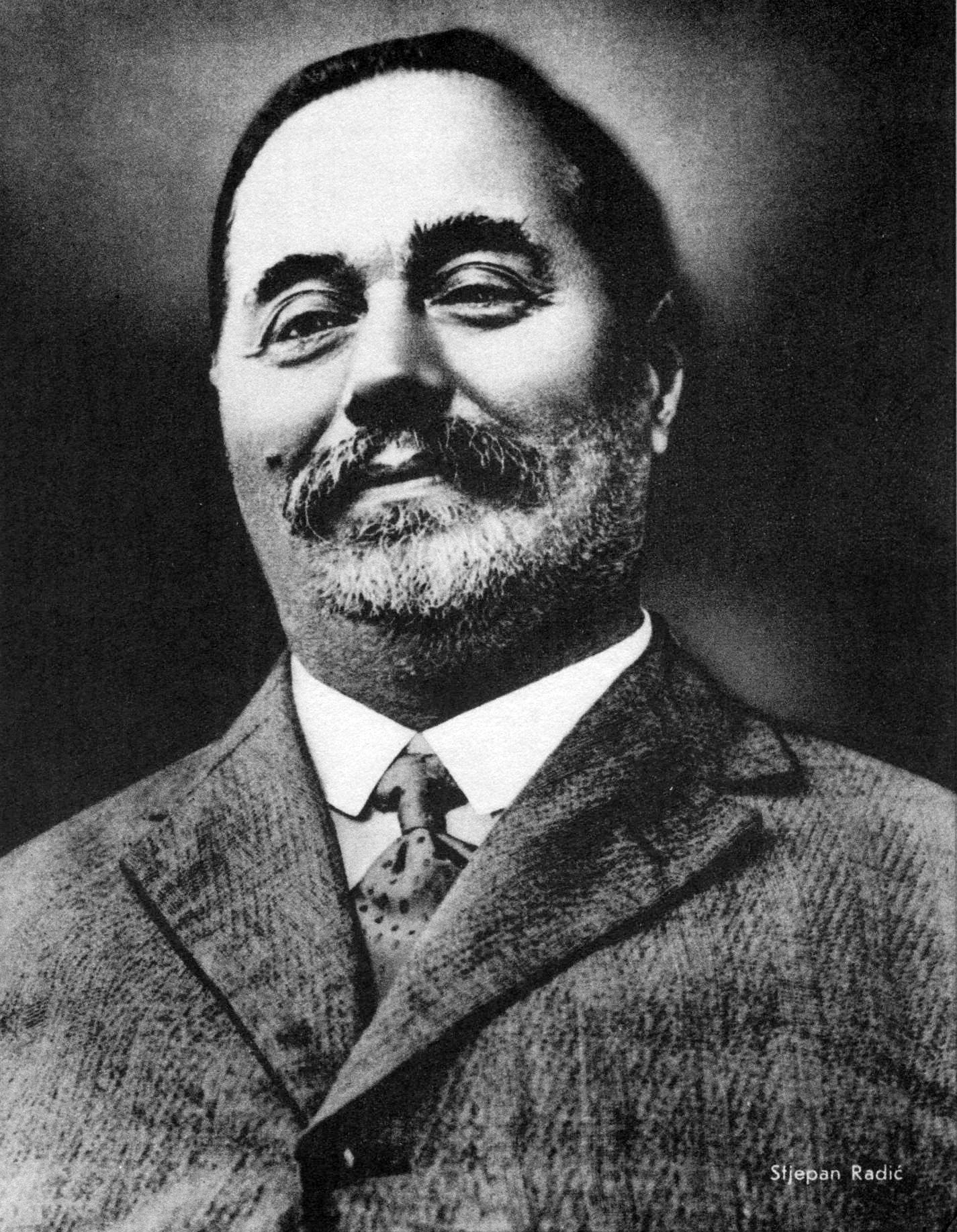 Stjepan Radić, pictured in the 1920s © public domain. In 1895 Radić was sent to prison for the public burning of the Hungarian flag in Zagreb – alongside Antun Dabčević, the father of Savka Dabčević-Kučar.
Stjepan Radić, pictured in the 1920s © public domain. In 1895 Radić was sent to prison for the public burning of the Hungarian flag in Zagreb – alongside Antun Dabčević, the father of Savka Dabčević-Kučar.
Stjepan Radić's desire for Croatian autonomy was not born from the ideals of the political class of Zagreb. The ninth of eleven children, born to a peasant family in a small village on the banks of the Sava river, just north of Sisak, Radić was very much a representative of the people whence he came. To him (and others in his family – his brother and nephew also being prominent politicians), education had the most important role to play in emancipation. He had lived in poverty in order to complete his own - after being banned from university-level educational institutions throughout the whole of the Austro-Hungarian empire for his protests against the state, he travelled penniless to Russia, France and Switzerland to complete his studies. In the latter, finance was one of his chosen subjects.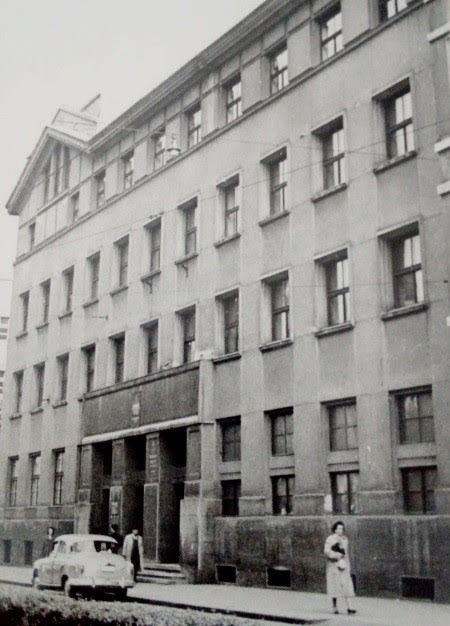 The first dedicated building of the Higher School of Economics and Commerce was located on the corner of Bauerova and Zvonirmirova © Faculty of Economics University of Zagreb
The first dedicated building of the Higher School of Economics and Commerce was located on the corner of Bauerova and Zvonirmirova © Faculty of Economics University of Zagreb
Under Radić's spell in office, the Zagreb College of Trade and Transport became the Higher School of Economics and Commerce. Its courses extended to four years, it attained university status. With no building designated to the increasingly popular institution, students had sometimes been taught at the Technical College (today's Museum of Arts and Crafts) and in parts of what is now the Mimara Museum. A dedicated home for the faculty was authorised and its construction started in 1927. Classes began at the faculty, located on the corner of Bauerova and Zvonimirova, in 1928, but within the decade the institution had outgrown its home and a plot of land in Svetice was acquired in order to build a new, larger facility. Its construction was interrupted by the Second World War and students would end up being taught on the Bauerova and Zvonimirova site all the way up to 1952.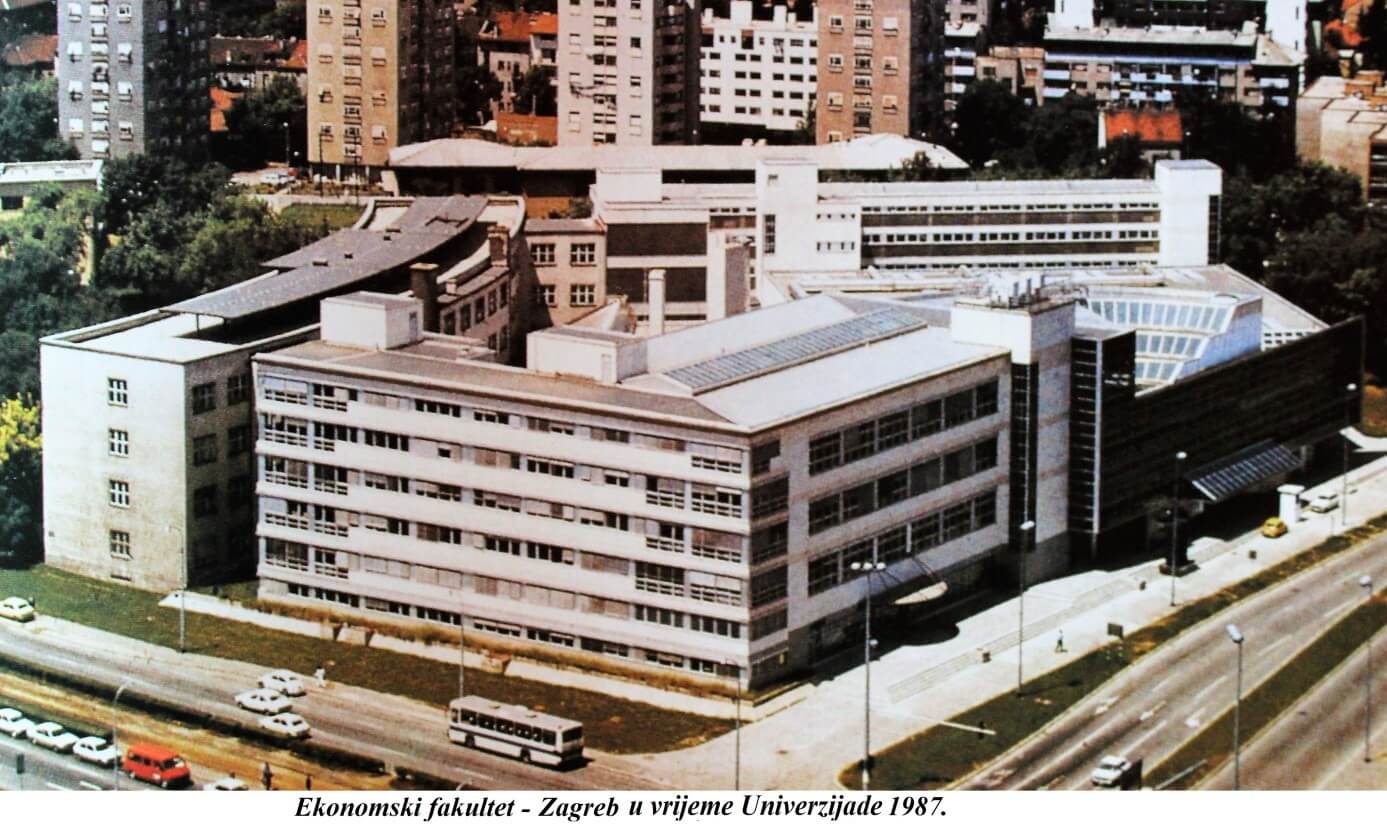 The faculty's modern building, pictured in 1987. Today, the faculty has 17 departments - Finance, Demography, Economic Theory, Business Economics, Informatics, Macroeconomics and Economic Development, Marketing, Mathematics, International Economics, Business in Foreign Languages, Organization and Management, Law, Accounting, Statistics, Trade and International Business, Tourism, Physical Education and Health © Faculty of Economics University of Zagreb
The faculty's modern building, pictured in 1987. Today, the faculty has 17 departments - Finance, Demography, Economic Theory, Business Economics, Informatics, Macroeconomics and Economic Development, Marketing, Mathematics, International Economics, Business in Foreign Languages, Organization and Management, Law, Accounting, Statistics, Trade and International Business, Tourism, Physical Education and Health © Faculty of Economics University of Zagreb
In 1947, the Higher School of Economics and Commerce became the Faculty of Economics University of Zagreb. In 1952, the faculty officially moved to the new site in Svetice. In 1968 it expanded once more when it merged with the 12-year-old College of Economics. Since then, the building at Svetice has received major upgrades and further facilities of the faculty can now also be found at the university campus in Borongaj, in Varaždin, in Koprivnica and in Bjelovar. After a century of existence, the Faculty of Economics University of Zagreb's longstanding difficulties to meet the popularity of its courses with the space available are now over. Not only can they accommodate every Croatian economy student who makes the grade, but they are also able to offer places to some of the best international students. It would surely come as no surprise if they are still educating the future elites of business, banking, finance and politics in another 100 years.
The Faculty of Economics University of Zagreb site in Svetice, as seen from its garden © Wolf - Pidgeon
Varaždin County to Finance School Meals for Secondary School Kids
As Poslovni Dnevnik writes on the 28th of January, 2019, throughout the course of this year, Varaždin County will continue to invest heavily in education and healthcare thanks to European Union money, in addition, the county is going to busy launching some brand new, important projects.
This year, Varaždin County, the first in Croatia to do so, begins with the implementation of a very significantt project, financing school meals for secondary school students at risk of poverty. This is one of the newer and by far most important projects foreseen in the budget for 2019.
"We first introduced free [school] transportation and textbooks, and we're also starting to finance meals for high school students who are at risk of poverty. As many as 30 percent of primary school students are at risk of poverty, and we've provided free meals for all of them.
Since everyone is continuing to study, this problem isn't just going to disappear, and it's also necessary to finance meals for the most vulnerable kids in secondary schools,'' said county prefect Radimir Čačić. In the budget for 2019, 3.45 million kuna is planned to go towards pupil nutrition. The continued implementation of another new project is still going on, which is student accommodation, for which 526,000 kuna was provided, almost twice as much as 2018.
Investments in the construction and in several cases reconstruction of as many as twenty different schools is anticipated.
"In 2019, 227 million kuna will be invested in school facilities, and health and social care facilities. The increase is best seen in the consolidated budget, which amounts to 1.2 billion kuna, representing 25 percent more than last year,'' added Varaždin County Prefect Čačić.
In other areas, an innovative incentive scheme for farmers through the use of EU funds is of particularly interest. Thanks to this, the number of farmers who secured their crops and livestock has increased from 5 back in 2017 to a very encouraging 357 in 2018, and this year, further increases in the number of beneficiaries is expected.
Make sure to follow our dedicated lifestyle page for more.
Split University Proclaimed Leading University in Croatia
In recent years, Split University has appeared on numerous lists of some of the most prestigious world rankings of higher education institutions, coming out as the leading university in the Republic of Croatia.
As Slobodna Dalmacija/Marijana Cvrtila writes on the 27th of January, 2019, the latest list published of the Best Global Universities Rankings by the American The News & World Report, has ranked Split University at 523rd place out of a total of 1250 top universities in the United States and eighty other countries across the world.
The Americans ranked Split University as the best Croatian university, with two other Croatian education institutions finding themselves placed on that same list: Zagreb University at 560th place, and Rijeka University in 1066th position (last year they weren't even on the list).
That is why Split found the second year in a row in front of Zagreb, although both universities had a slightly worse success in 2019 than in 2018: the University of Split was among the top 500, with a ranking at 487, while Zagreb took over 526 position.
Despite the fact that three Croatian universities have been listed among the best in the world, it's worth mentioning that universities in two neighbouring universities have been better placed on this list than our best university; Ljubljana University is at 384th place, which is progress when compared to last year when it was placed in 394th position, while Belgrade University came in at 427th place, which is down compared to last year (397th).
According to Best Global Universities Rankings, Serbia has four higher education institutions on the list, but the universities in Novi Sad, Niš and Kragujevac are ranked behind 1000th place, while Slovenia still has Maribor University in a decent 788th place.
There are no other countries in the former Yugoslavia on this scale at all. Of the new(er) EU member states, Split University is better ranked, for example, when compared to the best universities in Bulgaria, Romania, Lithuania, Latvia, or Slovakia.
Of course, the world's top universities are in America: Harvard, MIT (Massachusetts Institute of Technology) and Stanford, while among the top ten of the only European higher education institutions are the United Kingdom's prestigious Oxford, at fifth place, and Cambridge coming in close at seventh place.
Over recent years, Split University is regularly getting placed ahead of Zagreb University, one of the most important international charts, the Times Higher Education, ranked it as such. Both of these charts are among the ranking leaders of various such institutions.
Split University has achieved some excellent placements in the categories of international cooperation, where it lies among the top eighty universities. However, the University of Zagreb is better placed towards global research reputation, which is the weakest point of Split University, which stands out in the field of physics.
Make sure to follow our dedicated lifestyle page for more.
Click here for the original article by Marijana Cvrtila for Slobodna Dalmacija
Carlsberg Croatia Signs Cooperation Agreement with Croatian University
An unusual but excellent agreement on cooperation signed between one Croatian university and Carlsberg Croatia is set to bring students closer to their potential employers, and connect theory and practice to help keep young people in Koprivnica.
As Poslovni Dnevnik writes on the 16th of November, 2018, on Wednesday, November the 14th, 2018, a press conference was held at the North University at the University Centre in Koprivnica, where the signing of a cooperation agreement between the Koprivnica educational facility and no less than Carlsberg Croatia was held. The press conference was attended by Helle M. Petersen, the president of Carlsberg Croatia's management board, dr. sc. Mario Tomiša, the vice president of the Koprivnica University Centre, associate professor. dr. sc. Vlado Tropša, the vice chancellor for teaching and student affairs, as well as other heads of study programs of the aforementioned University.
With signing the said cooperation agreement, a period begins in which students and the Koprivnica brewery (part of the Danish Carlsberg Group) are expected to find ways to work together. Student practices, the visiting of various experts from Carlsberg at the university, as well as connecting through other projects will be mutually beneficial.
Helle M. Petersen, CEO of Carlsberg Croatia, noted during the introductory part of the conference: "The collaboration of the economy and educational institutions is the only safe way for the whole society to progress. Koprivnica is a wonderful place to live, with many advantages offered by its residents, and for young people to remain here we need to connect a professional perspective to it, too. At Carlsberg, we're proud that we've always been a learning organisation and have been developing our people, and that's why we want young people to recognise the benefits of working in an international environment, a company that deals with such a passionate and interesting thing, as is beer production.''
Assoc. prof. dr. sc. Mario Tomiša emphasised that this cooperation will strengthen the link between Koprivnica and international companies: "Koprivnica is a small town, and we who were born here have been living with Carlsberg since our youth, our family, friends and our associates work there, the Carlsberg connection is a long-standing and powerful one, and North University wants this link to be deepened even further, to the satisfaction of all three sides.''
During the conference, Tomiša emphasised that the agreement encompasses cooperation on scientific research and professional projects, cooperation on teaching at the university in question, as well as in the development of knowledge, skills and competences of students.
"We're happy that Carlsberg Croatia has recognised the quality of our studies and has decided to support us in an effort to provide students with more through their studies. Lifelong education, programs which connect theory and practice, and connecting students with their potential employers; these are all areas in which the university has impressive results. This year, the university opened up a new undergraduate degree in Food Technology, and in the second and third year, we focus on beer production. Today, we have 27 study programs at the university, so we can cooperate with Carlsberg on a series of other directions such as economic and technical logistics, sustainable mobility and logistics, media design, business, and management,'' concluded Tomiša.
Want to keep up with more news like this? Make sure to follow our lifestyle page.
Tender for 100 New Kindergartens Worth Billion Kuna Now Open
Currently, 621 projects are currently being implemented in Croatia with a total value of 1.4 billion kuna, funded by ''measure seven'' of the praiseworthy Rural Development Program.
Project Worth 43m EUR in Zagreb to Construct One of the Most Innovative Centers in Europe
The Institution for Vocational Rehabilitation and Employment for Persons with Disabilities (URIHO) in Zagreb currently employs 522 workers, out of which 62% have some kind of disability or intellectual disability. The roughly 500 employees have a contract of work or collective agreement, while around 300 visitors to the URIHO join creative workshops and other programs.


